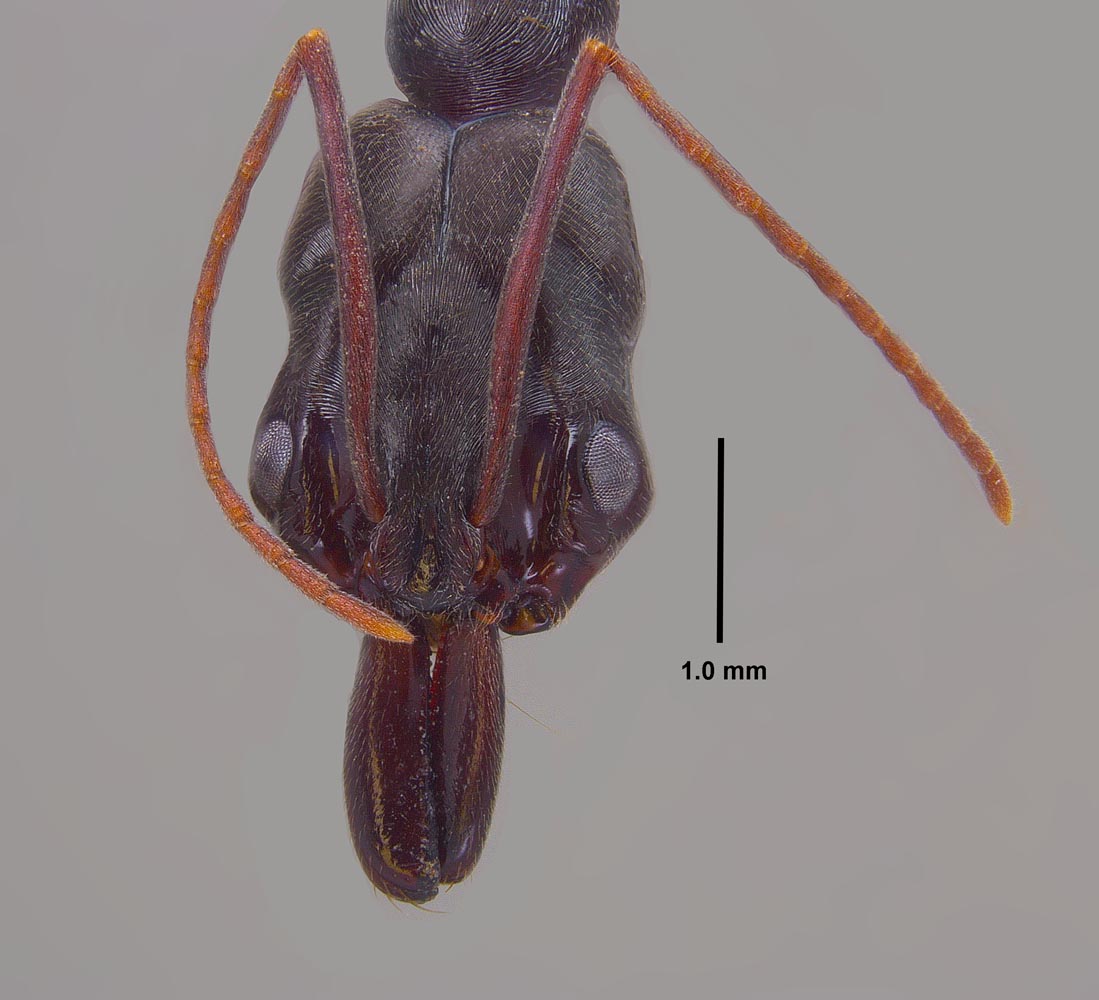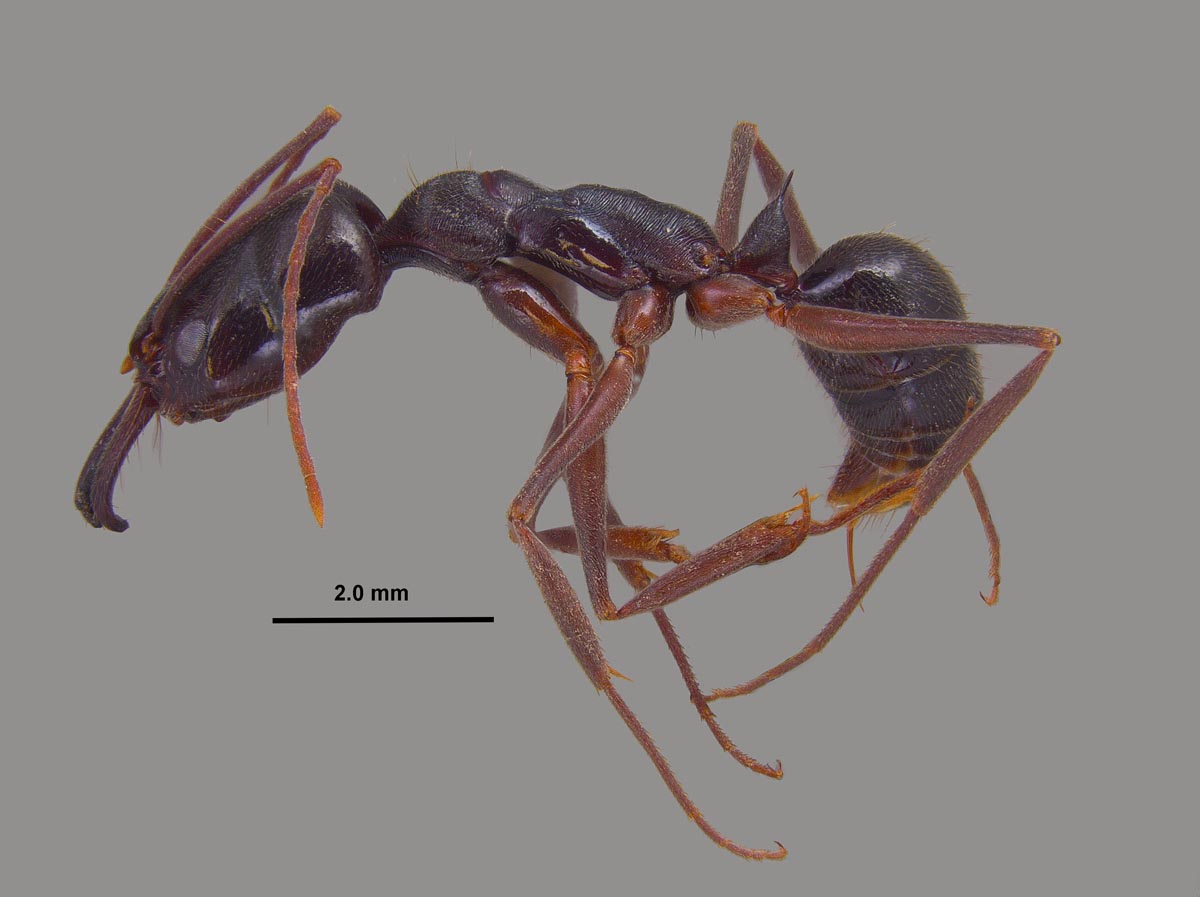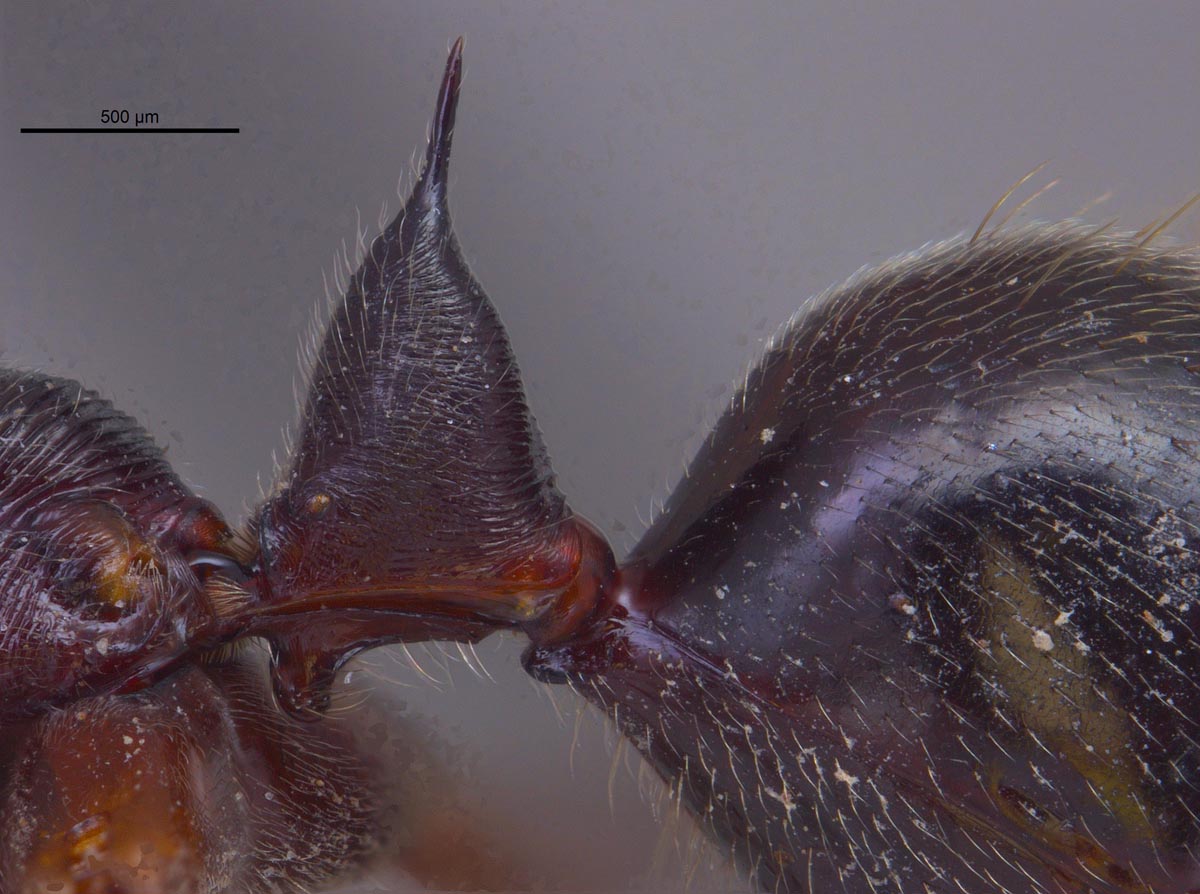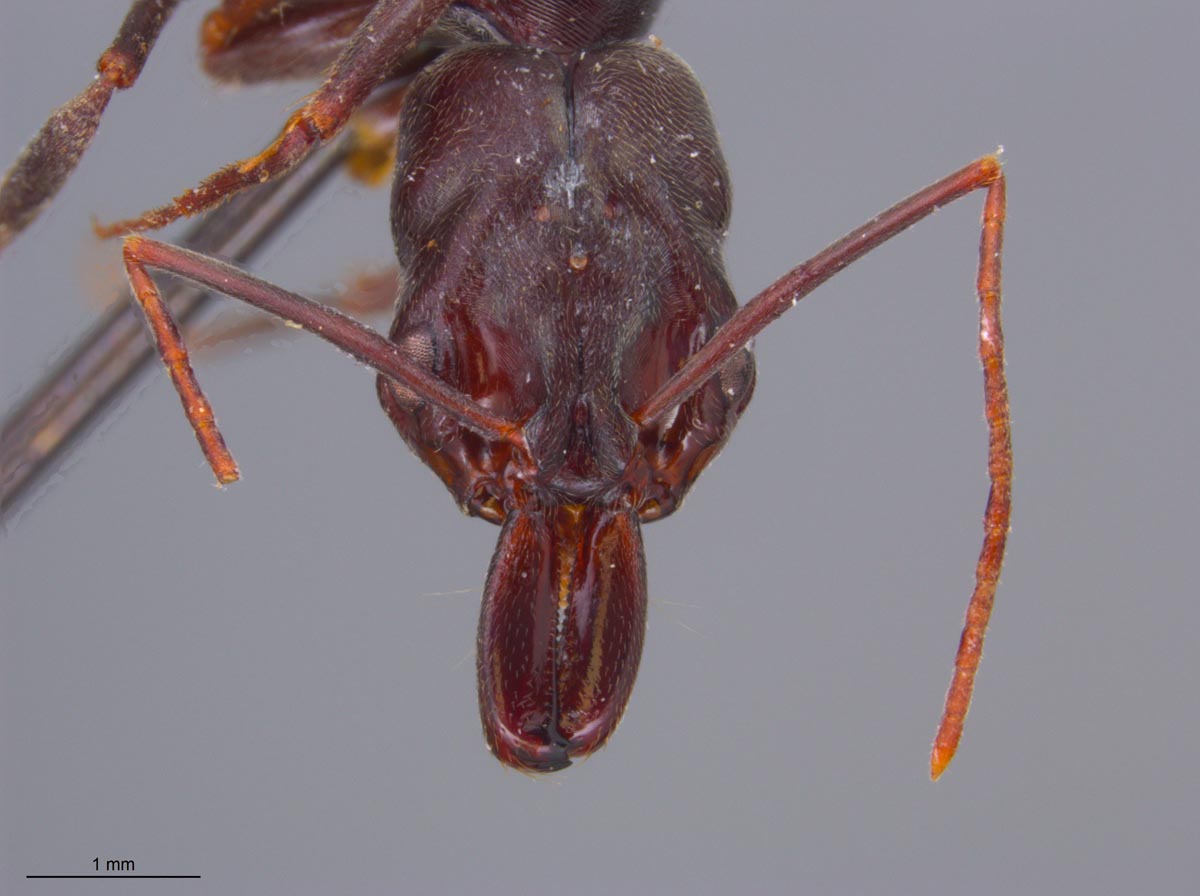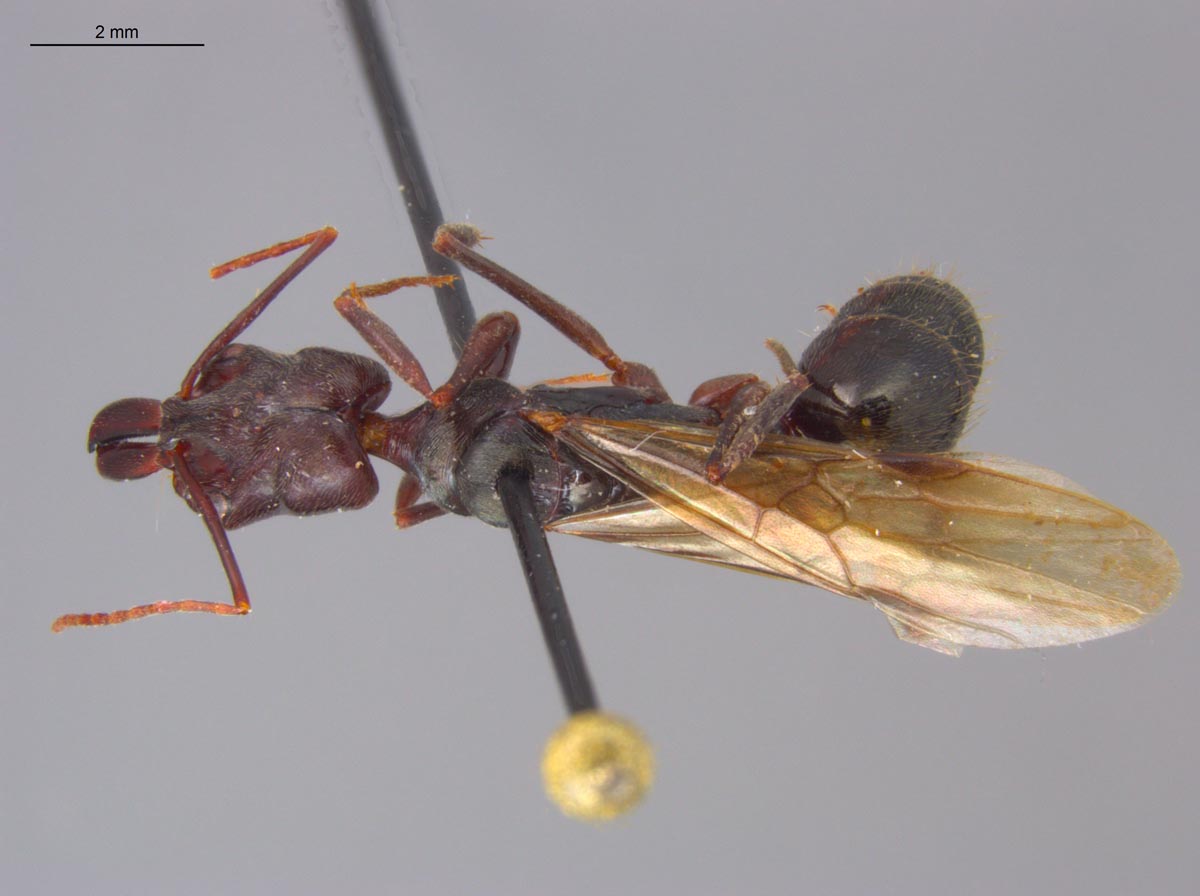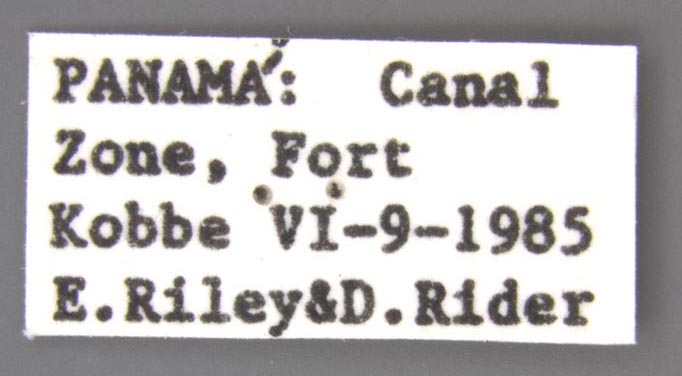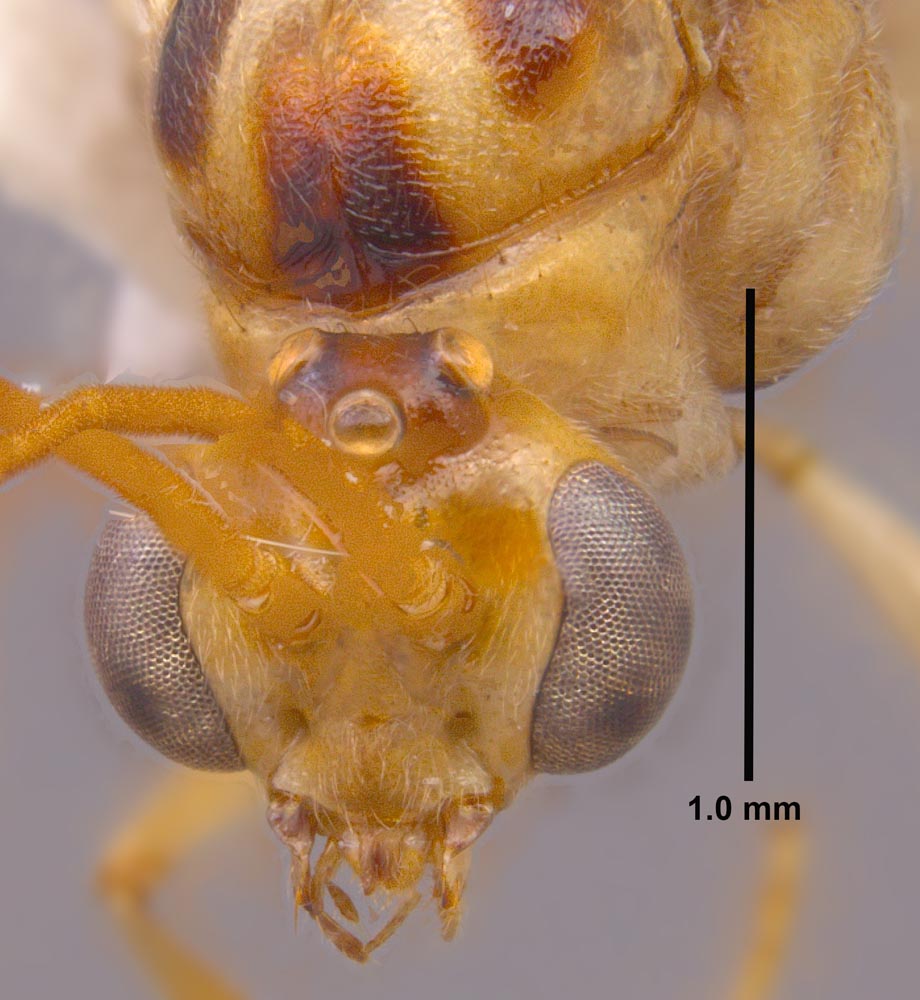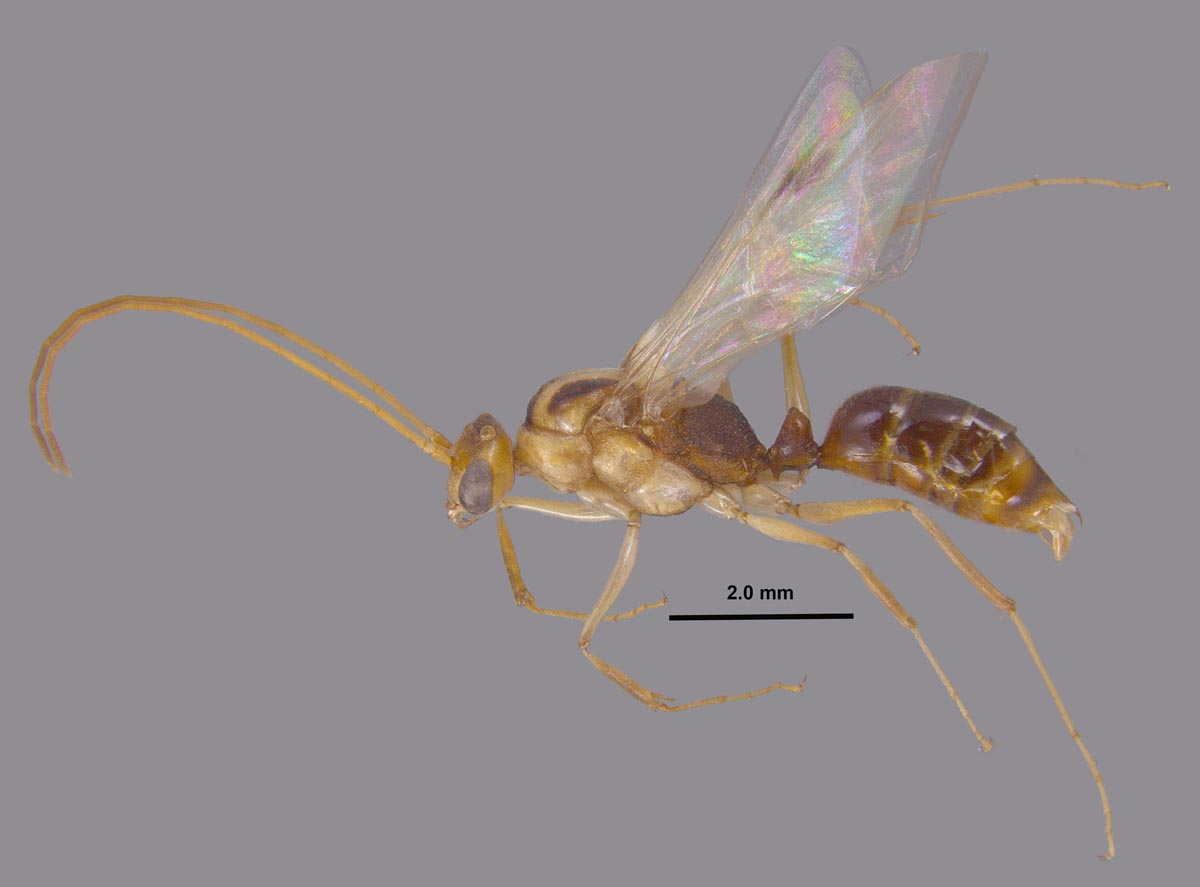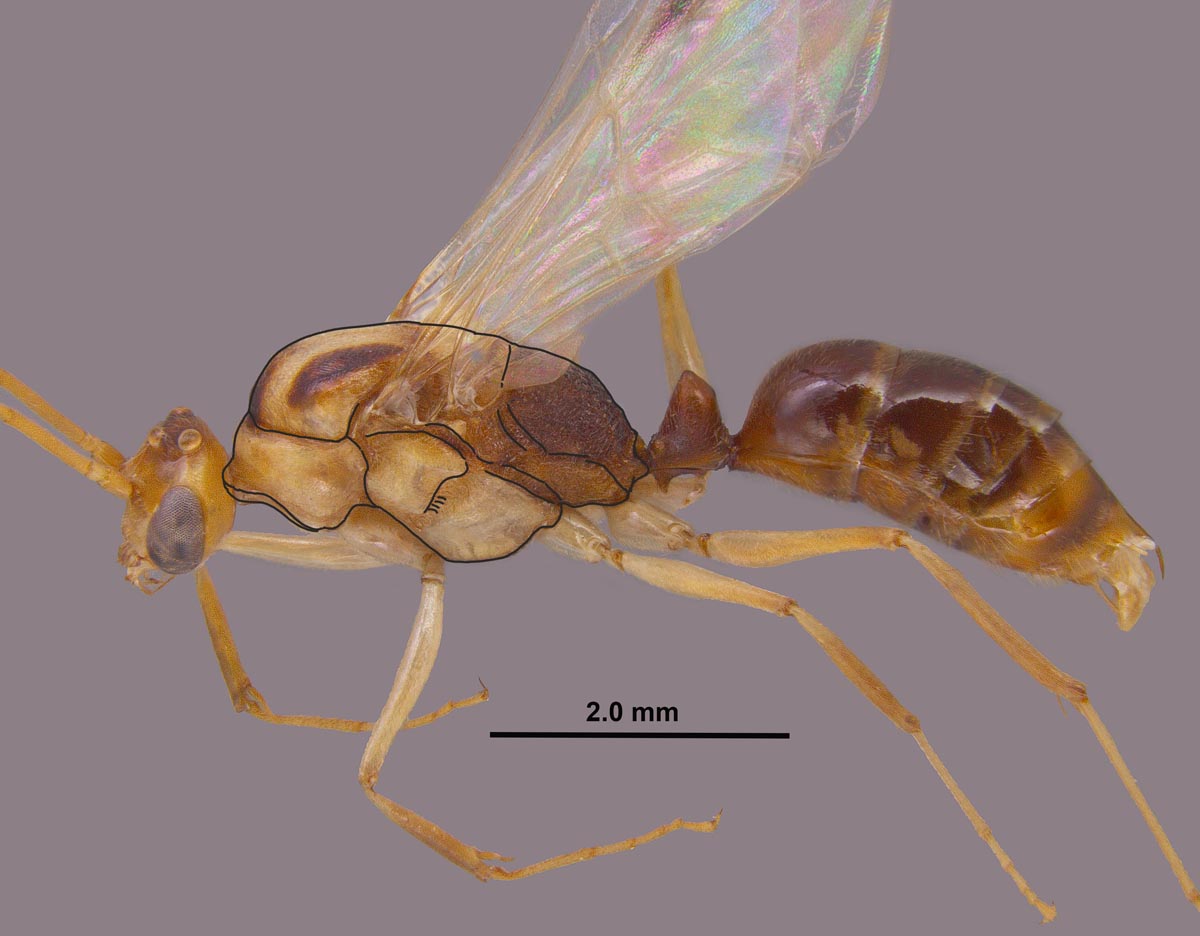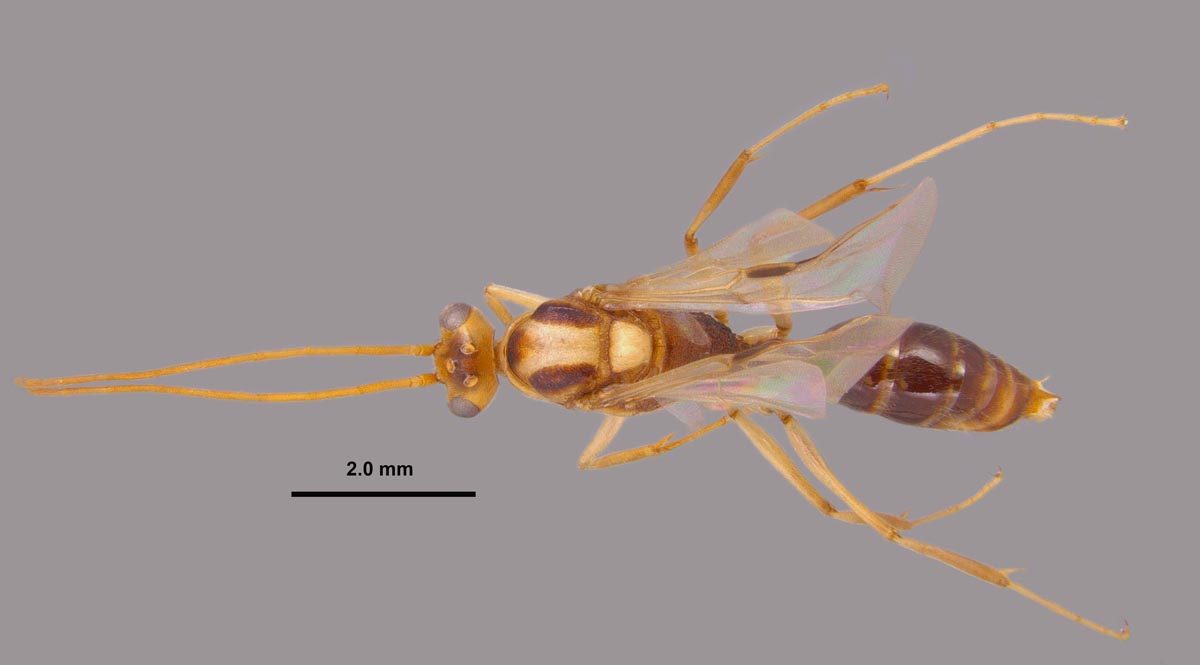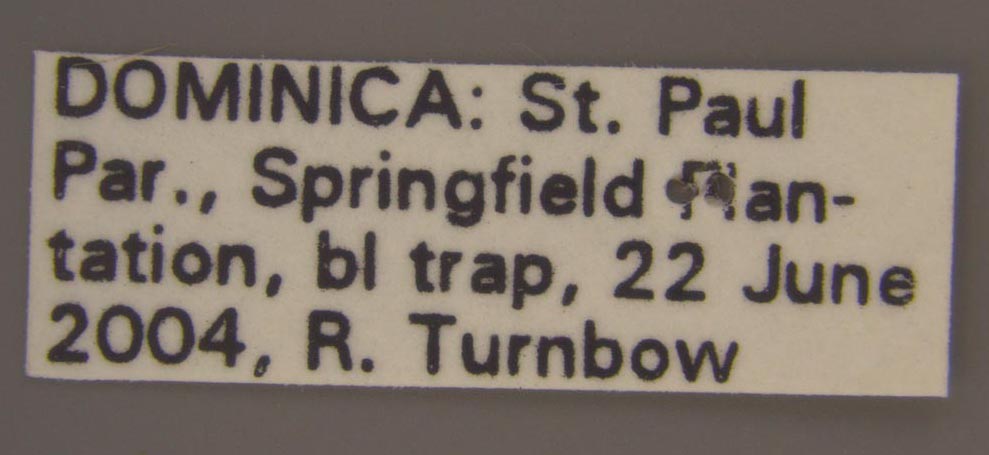Introduction
Ants in this genus differ from other ponerine ants found in the United States by the unique head shape; peculiar mandibles, which are elongate and inserted near the center of the clypeus (see photo above); the large tapering petiole; and the large size of the workers. Members of this genus are commonly called trap-jaw ants due to their elongate mandibles, which can be opened to 180°, then snapped rapidly together on prey. These ants are amazing in their ability to control and time the mandibular movement. When necessary, an ant can forcibly close the mandibles against a surface or other organism and actually propel itself away for up to several inches! Remarkable behavior. Additionally, they can use the mandibles for much more sensitive movements such as caring for larvae or nest building.
Taxonomic History (from Barry Bolton, 2012)
Described as
Odontomachus bauri Emery (1892); considered a subspecies of Odontomachus haematodus by Emery (1911); revived as a species by Taylor and Wilson (1962).
Identification
Worker: HL, 2.34-2.55 mm; HW, 1.8-2.2 mm; ML, 1.4-1.6 mm; EL, 040-0.48 mm; SL, 2.26-2.43 mm; PTH, 1.10-1.3 mm; PTL, WL, 2.79-3.3.1 mm (n=4). Dark brownish-black. Scape extends beyond the posterior region of head by about the length of the first funicular segment. Pronotum with transverse striae posteriorly. In profile view, the anterior and posterior surfaces of petiole are both similarly convex, giving the petiole a dome-like appearance; apical tip of petiole terminates in a slender, elongate, straight spine directed upward or slightly backwark; spine is approximately the same width for most of its length and appears to arise from near center of petiole; and with transverse striae on sides and posterior. Metasternal ridge bicuspid with a notch in the middle. Gaster with fine appressed pubescence separated by at least one-fourth the length of each hair.
Male: HL, 1.04-1.08 mm; HW, 1.12-1.34 mm; SL, 0.19-0.21 mm; EL, 0.70-0.72 mm; EW, 0.40-0.42 mm; OL, 0.18-0.19 mm; PTH, 0.84-0.90 mm; PTL, 0.52-0.56 mm; WL, 2.80-2.94 mm (n=4). Head and thorax yellow to yellowish-brown with three black stripes on pronotal dorsum; propodeum, petiole, and gaster brownish-black, and antennae and legs pale yellowish-brown. Ocelli not on a conspicuous turret (as in some species), with each ocellus less than two-thirds as wide as the ocelllo-ocular space. Petiole strongly rugose laterally.
Female: HL 2.34-2.75 mm; HW 2.08-2.23 mm; ML 1.46-1.56 mm SL 2.34-2.38 mm, EL, 0.48-0.5 mm, OL, 0.08-0.10 mm, PTH 1.444-1.56 mm, PTL 0.64-0.70 mm, WL 3.50-3.85 mm (n=4). Similar and color and other features to worker, but larger, with enlarged mesosoma for flight muscles, and with fully developed wings.
This species could be confused with O. ruginodis and O. haematodus. The longer scapes and larger size of workers should separate it from O. ruginodis. The entire posterior face of the petiole being covered with transverse striae and the much shortened metasternal processes that are not in the form of slender, elongate teeth should separate O. bauri from O. haematodus.
Biology and Economic Importance
Similar to US species, O. bauri is apparently more tolerant of dry conditions and throughout its range it extends into semiarid to seasonally dry habitats (Brown 1976). Longino (1999), observed this species nesting under epiphytes in the canopy. He stated that it was a common forager on the ground on the in western Costa Rica, but on the Atlantic side, nests were common in the canopy and foragers were rarely seen on the ground. In a study done on Barro Island, Panama, Ehmer and Hölldobler (1996) noted that this species was a leaf litter species that foraged equally day or night. Nests examined in this study were polydomous and found in leaf litter on the forest floor and in leaf litter in tops of palms. Nests found on the ground did not extend into the soil. This species is a general predator of many invertebrates, such as termites, other ant species, wood lice, and other groups (Ehmer and Hölldobler 1996). In a genus noted for extremely fast mandibular strikes, this species has been reported to have incredibly fast strike speeds of 35.5-64.3 meters per sec (78-145 miles per hour) (Patek et al. 2006). Unlike native Odontomachus species in the US and Caribbean, O. bauri has been reported to be aggressive, with reports of an immediate, but not long lasting, burning sensation at the site of the sting (Rodriquez-Acosta and Reyes-Lugo 2002). However, Rodriquez-Acosta and Reyes-Lugo (2002) reported intense allergic reactions from the bites of this species in approximately 16% of humans bitten.
Distribution: Tropical Central and South America (Bolivia, Brasil, Colombia, Costa Rica, Ecuador, Honduras, Nicaragua, Panama, Peru, and Venezuala), Galapogos, West Indies (Dominican Republic, Guadeloupe, Haiti, Jamaica, Puerto Rico) except Cuba and Bahamas (MEM data, Antweb 2013, Brown 1976).
Literature Cited
Antweb. 2013. http://www.antweb.org. Retrieved 5 May 2013.
Bolton, B. 2012. Bolton World Catalog Ants. accessed on October 2012. [Available online: http://www.antweb.org/world.jsp]
Brown, W. L., Jr. 1976. Contributions toward a reclassification of the Formicidae. Part VI. Ponerinae, tribe Ponerini, subtribe Odontomachiti. Section A. Introduction, subtribal characters. Genus Odontomachus. Studia Entomol. 19:67-171.
Ehmer, B. and B. Hölldobler. 1996. Foraging behavior of Odontomachus bauri on Barro Colorado Island, Panama. Psyche 102: 215-224.
Emery, C. 1892(1891). Voyage de M. Ch. Alluaud dans le territoire d'Assinie. Formicides. Annls Soc. Entomol. Fr. 60:553-574.
Emery, C. 1911e. Hymenoptera. Fam. Formicidae. Subfam. Ponerinae. Genera Insectorum 118:1-125.
Longino, J. 1999. Ants of Costa Rica: Odontomachus bauri Emery 1892. Online at: http://academic.evergreen.edu/projects/ants/genera/odontomachus/species/bauri/bauri.html (accessed on 11 October 2012).
Patek, S. N., J. E. Baio, B. L. Fisher, and A. V. Suarez. 2006. Multifunctionality and mechanical origins: Ballistic jaw propulsion in trap-jaw ants. Proceeding of the National Academy of Sciences of the United States of America 103: 12787-12792.
Rodriquez-Acosta, A. and M. Reyes-Lugo. 2002. Severe human urticaria produced by ant (Odontomachus bauri, Emery 1892) (Hymenoptera: Formicidae) venom. .International Journal of Dermatology 801: 8803.
Taylor, R. W. and Wilson, E. O. 1962 ("1961"). Ants from three remote oceanic islands. Psyche (Cambridge) 68:137-144.
Links
AntWeb Images



